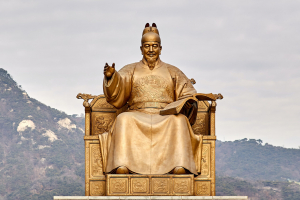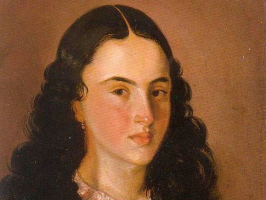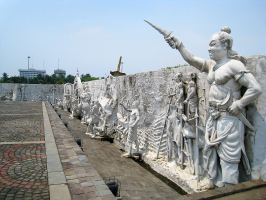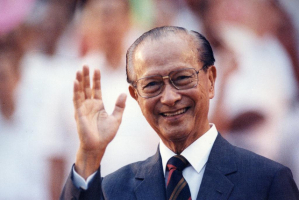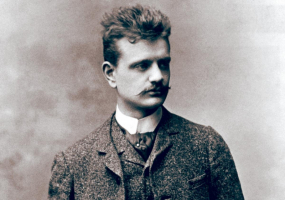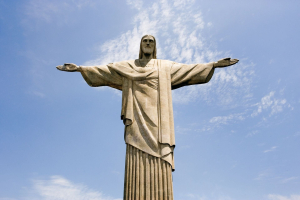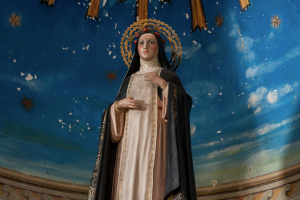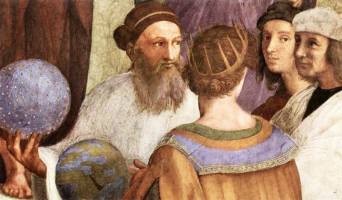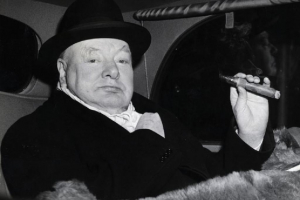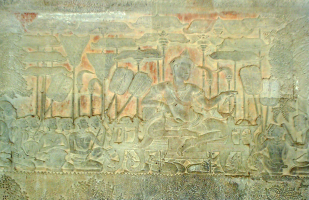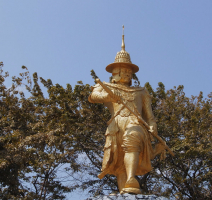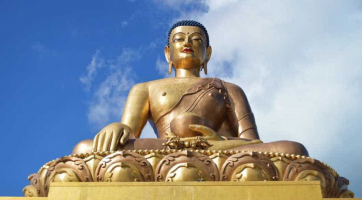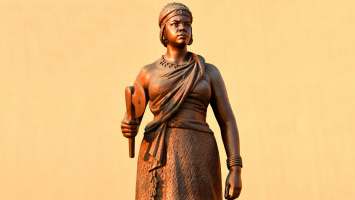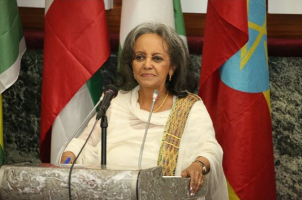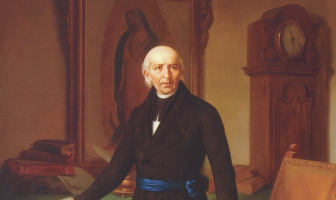Top 10 Most Important Historical Figures In Serbia
Being situated at a crucial intersection where the interests of numerous powerful powers have historically intersected, Serbia has had a quite volatile history ... read more...and has been the scene of numerous conflicts. Without using swords or muskets, many historical leaders owed the Serbian people debts of gratitude. Many of them served as the people's morale boosters and spiritual leaders, guiding them through the most trying periods of war, famine, and illness. And here are the most important historical figures in Serbia.
-
Vuka Popadić, formerly Jovanovic, was a Serbian war hero who saved many people, particularly women and children. She is considered as one of the most important historical figures in Serbia as well.She provided sanctuary for fifteen Austro-Hungarian soldiers before setting up a bandage station and rescuing hundreds of Serb soldiers. He provided shelter to women and children from Dorol who fled their houses because of regular bombings during the most trying times of the war. This woman, who was unaffected by bombings, turned her house into a haven on Duanova Street, where she cheered up entire families and so gave them immense assistance. Lela, her sister, and Jelena, her eleven-year-old daughter, helped her out. Vuka Popadi made a lasting impression on her fellow inhabitants as well as the soldiers and officials stationed at Dorol with her bravery and tact.
The heroic actions of this unyielding woman were on display throughout two successful Austrian attempts to capture Belgrade. After the initial invasion of Belgrade, Vuka Popadi surrounded herself with destitute and terrified locals and assured them that the city would not be occupied for very long. By rescuing more than a hundred Serbian soldiers during this trying year, Vuka Popadi once more demonstrated why she was the bravest Belgrader in World War I. In Princa Evgenija Street, Mrs. Popadi opened a temporary bandage-station with the aid of her sister Lela and daughter Jelena.
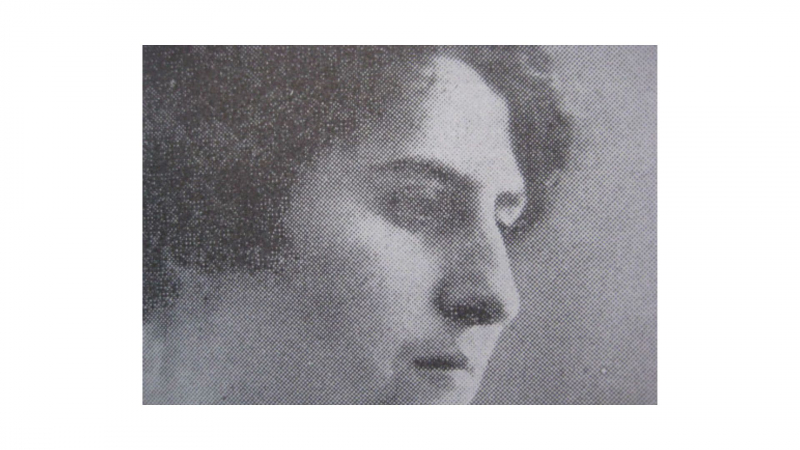
Photo: Serbia.com 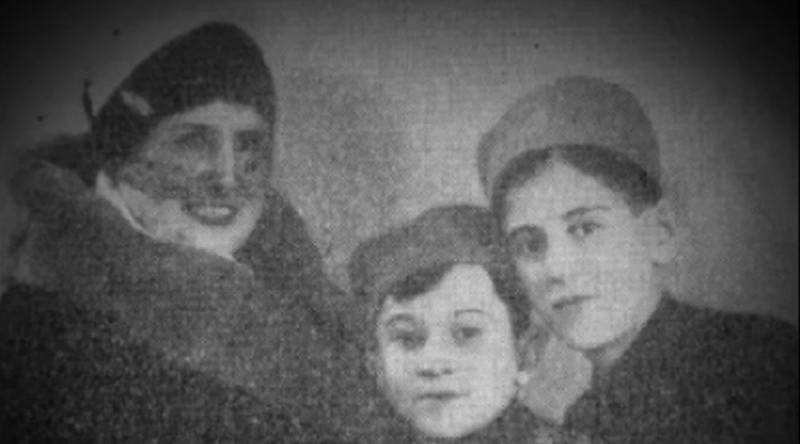
Photo: Srbija Danas -
Between 1389 and 1402, Despot Stefan Lazarević (1377 - 19 July 1427), also known as Stefan the Tall, was the prince and despot of Serbia (1402–1427). He was recognized as one of the finest knights and military leaders of his day, and was the son of Prince Lazar Hrebeljanovi. He took over as the monarch of Moravian Serbia after the death of his father at Kosovo (1389) and reigned alongside his mother Milica (a Nemanji) until he reached adulthood in 1393. As an Ottoman vassal, Stefan commanded soldiers in a number of conflicts before declaring his independence in 1402, when he was given the title of tyrant by the Byzantines.
On the home front, he overcame the Serbian nobility's resistance and made use of the peaceful times to fortify Serbia's political, economic, cultural, and military institutions. He published the Code of Mines in 1412, which included a special section on managing Novo Brdo, the biggest mine in the Balkans at the time. This code accelerated Serbia's mining industry development, which had been the Serbian Despotate's primary source of revenue. Serbia was one of Europe's top silver producers at the time of his death.
He carried on the Morava school's development in the realm of architecture. Sometime the early beginnings of the Serbian Renaissance are linked to his rule and literary output. He gave Serbia access to guns, contemporary combat techniques, and knightly contests. He was a big supporter of the arts and culture, giving scholars and refugees from Ottoman-captured neighboring nations sanctuary and assistance. He was also a writer in his own right; his most notable piece, A Homage to Love, has Renaissance-style lines. He established the Resava School during his rule.
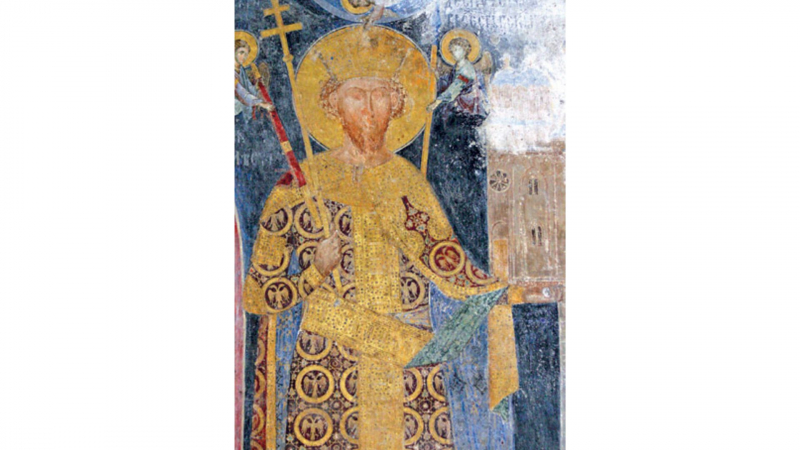
Photo: Wikimedia Commons 
Photo: Pinterest -
Saint Sava, also known as the Enlightener, was a Serbian prince, an Orthodox monk, the first Archbishop of the autonomous Serbian Church, the creator of Serbian law, a diplomat and one of the most important historical figures in Serbia. He lived from 1169 or 1174 to 14 January 1236. The youngest son of Serbian Grand Prince Stefan Nemanja, Sava was born as Rastko Nemanji and temporarily governed Zachlumia between 1190 and 1192. He subsequently departed for Mount Athos, where he took the name Sava and became a monk (Sabbas). He founded the Hilandar Monastery on Mount Athos, which the Serbian people used as one of their most significant religious and cultural centers. In addition to writing the Zakonopravilo nomocanon, the first known Serbian constitution, in 1219, he was also recognized as the first Serbian Archbishop by the Patriarchate exiled in Nicea, ensuring Serbia's complete political and ecclesiastical independence. The author Sava is credited with starting Serbian medieval literature.
He is regarded as one of Serbia's most significant historical personalities. In actuality, Sava is to the Serbs what Maimonides and Averroes are to the Jews and Muslims, respectively. The Eastern Orthodox Church honors Saint Sava on January 27. His career has been represented in several artistic creations from the Middle Ages to the present. He serves as Serbia's, Serbs', and Serbian education's patron saint. One of the greatest churches in the world, the Church of Saint Sava is located in Belgrade and is dedicated to him. The Ottomans burned his ashes there in 1594 during a rebellion in which Serbs flew Sava icons as their battle flags.
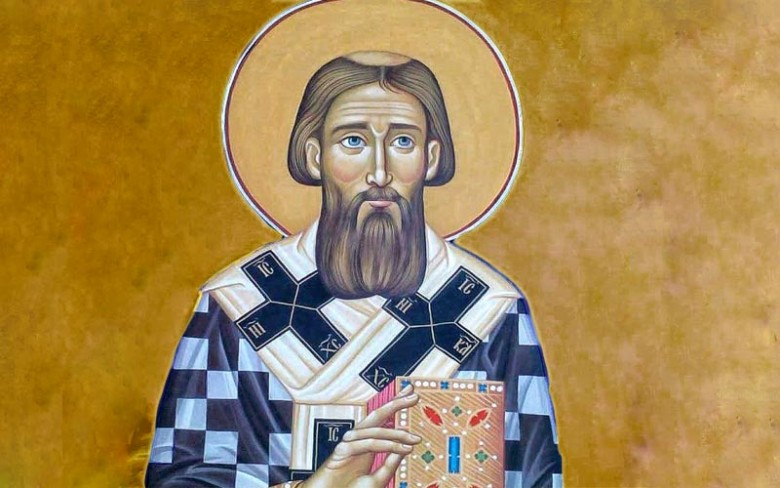
Photo: SERBIAN SHOP 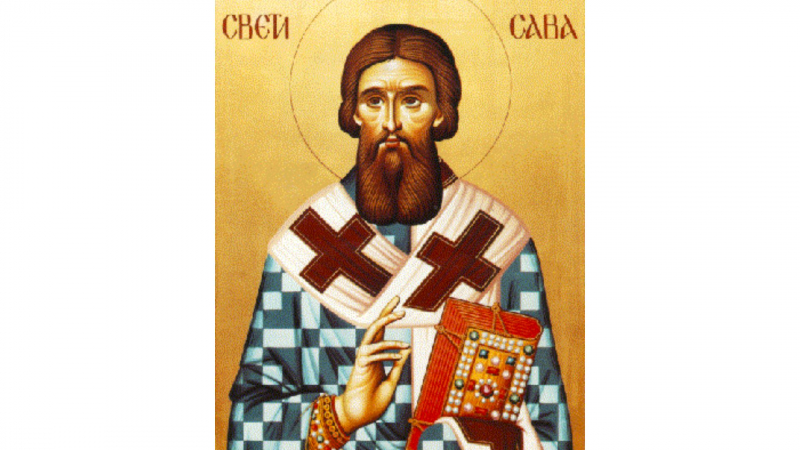
Photo: Yugotour -
Vuk Stefanović Karadžić was a Serbian philologist, anthropologist, and linguist who lived from 6 November 1787 (26 October OS) until 7 February 1864. He was a key figure in the modernization of Serbian language. He was the compiler of the first Serbian dictionary in the new reformed language, and Encyclopaedia Britannica called him "the father of Serbian folk-literature research" for his collection and preservation of Serbian folktales. Additionally, he revised the Serbian language and spelling for the New Testament translation. Jacob Grimm, Johann Wolfgang von Goethe, and historian Leopold von Ranke were all acquainted with him. He was also highly known internationally. The main source for Ranke's 1829 book Die serbische Revolution ("The Serbian Revolution") was Karadžić.
Around the same time, Vuk Karadžić adopted stringent phonetic rules based on the Czech alphabet of Jan Hus and Johann Christoph Adelung to reform the Serbian literary language and standardize the Serbian Cyrillic alphabet. The Serbian literary language was modernized, separated from Serbian and Russian Church Slavonic, and made closer to everyday speech by Karadžić. The significance of the Kosovo Myth in Serbian national identity and history was established in large part because of his work.
Karadžić received honors all around Europe. He received several honorary doctorates, was decorated by the Russian and Austro-Hungarian kings, the Prussian king, the Order of Prince Danilo I, the Russian academy of science, and other learned societies throughout Europe. He was chosen as a member of the Imperial Academy of Sciences in Vienna, the Prussian Academy of Sciences, and the Russian Imperial Academy of Sciences. The year 1987 was designated as Vuk Karadžić's by UNESCO, and Karadžić was made an honorary citizen of Zagreb.
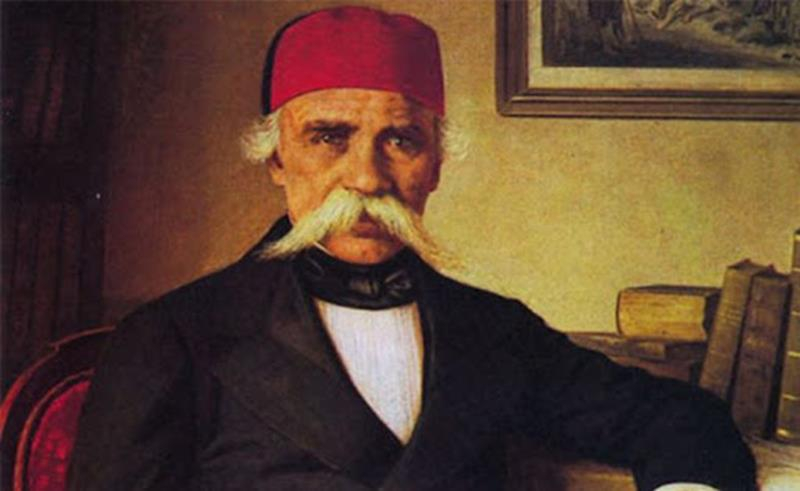
Photo: The Srpska Times 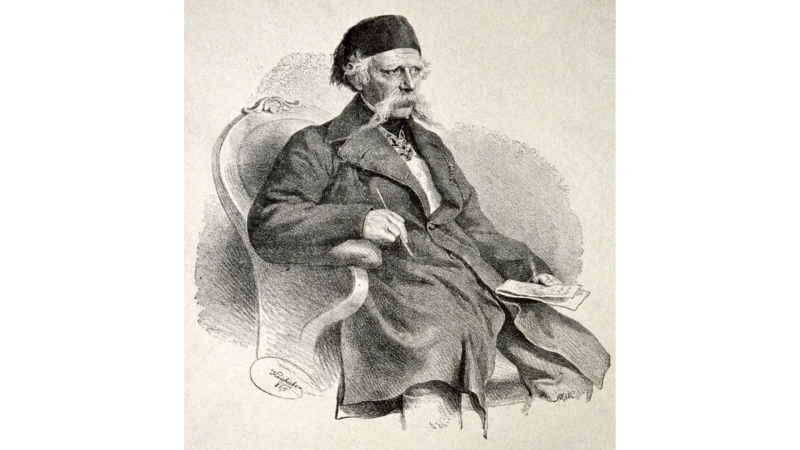
Photo: Britannica -
The next most important historical figure in Serbia is Stefan Nemanja. From 1166 until 1196, Stefan Nemanja (1113 or 1114 – 13 February 1199) served as the Serbian Grand Principality's Grand Prince (Veliki upan). Nemanja, a founding member of the Nemanji dynasty and a member of the Vukanovic dynasty, is known for his contributions to Serbian culture and history, including the establishment of the Serbian Empire and the national church. Nemanja is among the most notable Serbs, according to the Serbian Academy of Sciences and Arts, for his literary accomplishments and humanitarian qualities.
Nemanja abdicated in 1196 in favor of his middle son Stefan Nemanji, who went on to become the first King of Serbia, following three decades of conflict and diplomacy, including the Third Norman invasion of the Balkans (1185–1186), which strengthened Serbia while separating it from both the Western and Byzantine spheres of influence. Nemanja eventually made his way to Mount Athos, where he joined his youngest son (after known as Saint Sava), who had already attained the position of first archbishop of the Serbian Orthodox Church, taking the name Simeon and becoming a monk. In 1198 and 1199, Nemanja and his son Saint Sava renovated the Hilandar Monastery on Mount Athos and published the "Charter of Hilandar." As a result, the monastery rose to prominence as Athos' primary Serbian Orthodox monastery. Stefan Nemanja was canonized by the Serbian Orthodox Church as Saint Simeon the Myrrh-streaming shortly after his passing.
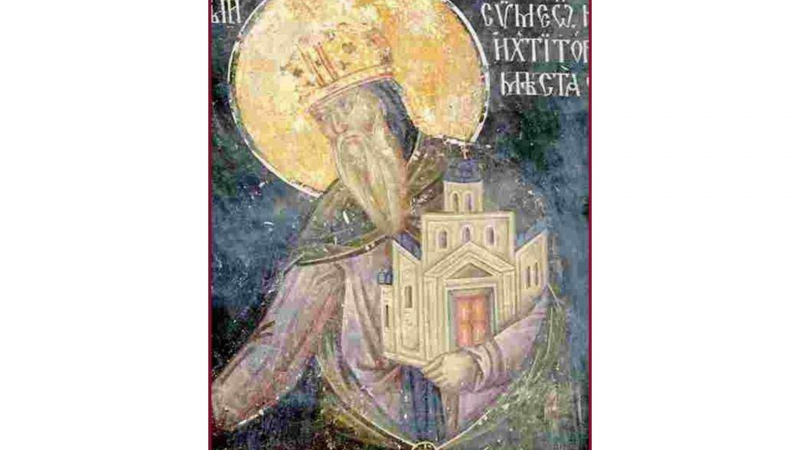
Photo: Wikipedia 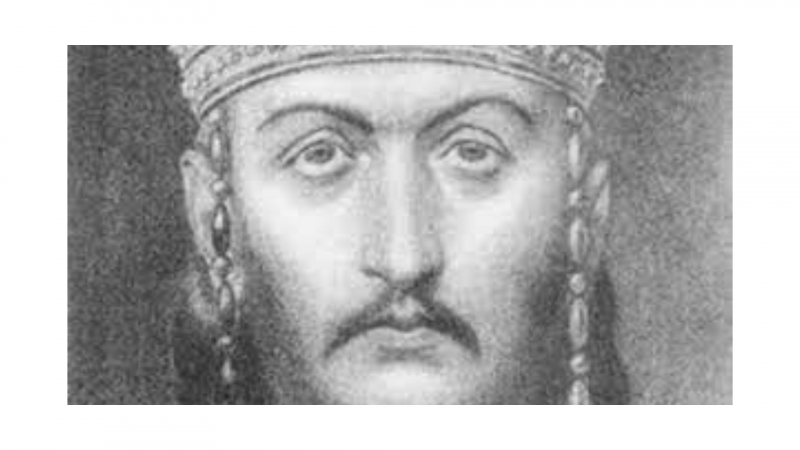
Photo: Serbian Monitor -
Nikola Tesla, a Serbian-American inventor, electrical engineer, mechanical engineer, and futurist, lived from 10 July 1856 to 7 January 1943. He is most known for his contributions to the creation of the contemporary alternating current (AC) energy delivery system. Tesla did a variety of experiments with mechanical oscillators/generators, electrical discharge tubes, and early X-ray imaging in an effort to create ideas he could patent and sell. Additionally, he constructed a wirelessly controlled boat, one of the first ever displayed. In addition to showing off his inventions to famous people and affluent clients at his lab, Tesla also gained notoriety for his showmanship when giving public lectures. Throughout the 1890s, Tesla experimented with high-voltage, high-frequency power in New York and Colorado Springs to further his theories on wireless lighting and global electric power distribution.
Nikola Tesla is regarded as one of the founding fathers of contemporary electricity. His contributions to energy research are comparable to those of his main opponent, Thomas Edison. Nikola Tesla, an energy visionary, established the foundation for the modern electricity generation and delivery networks. Nikola Tesla was a philosopher in addition to being an electrical engineer by training and a natural inventor. His goal to harness electricity to transform the world was motivated by his understanding of how the cosmos functions. We have the electric power we use today because of his work with AC power and systems, the Tesla coil, and AC motors.
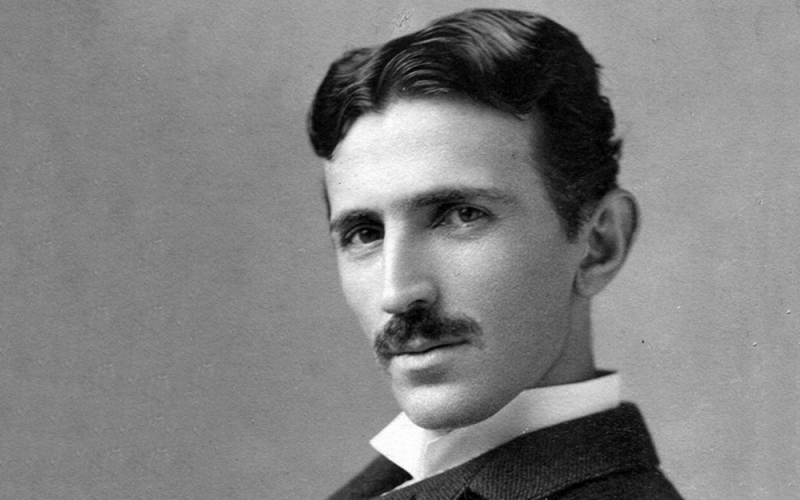
Photo: VnExpress 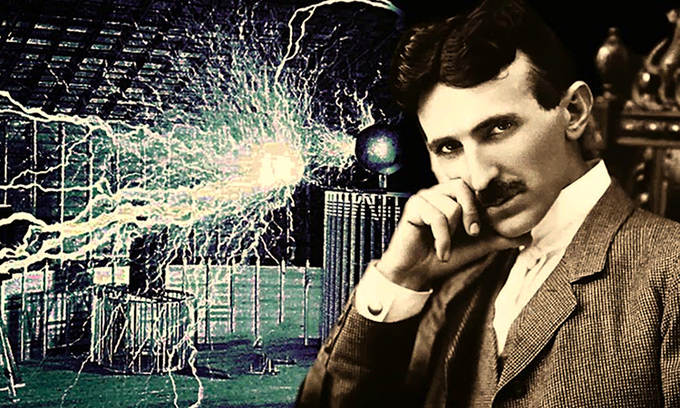
Photo: VnExpress -
Prince Mihailo Obrenović III (16 September 1823 – 10 June 1868) was the ruler of Serbia from 1839 to 1842 and again from 1860 to 1868. His first and second reigns came to an end when he was overthrown in 1842 and 1868, respectively. As one of the absolute enlightened monarchs of Europe, he is regarded as a brilliant reformer and the most enlightened leader of contemporary Serbia. In opposition to the Ottoman Empire, he promoted the idea of a Balkan federation.
Having been born in late 1823 and proclaimed prince on June 25, 1839, Mihailo ascended to the throne as a minor. The next year, he was proclaimed to be of legal age. Few thrones seemed more safe, and if it weren't for his lack of drive and disregard for political developments, his power may have lasted the rest of his life. Due to his inexperience, he struggled to handle the difficulties Serbia encountered during his first term. After spending 18 years in exile, Mihailo was welcomed back as Prince of Serbia in September 1860 following the passing of his father, who had reclaimed the throne in 1858. He governed as an enlightened absolute king for the following eight years. The first modern Serbian coins were produced during his leadership. He was also the first modern Serbian leader to formally name Belgrade as the nation's capital as well as one of the most important historical figures in Serbia.
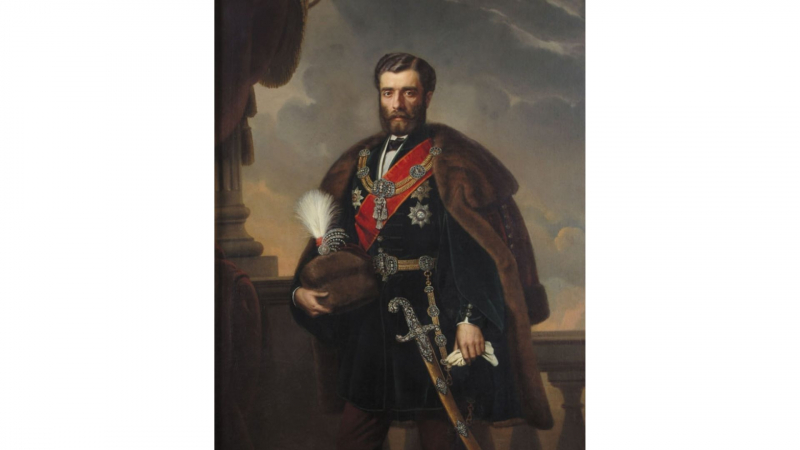
Photo: Wikipedia 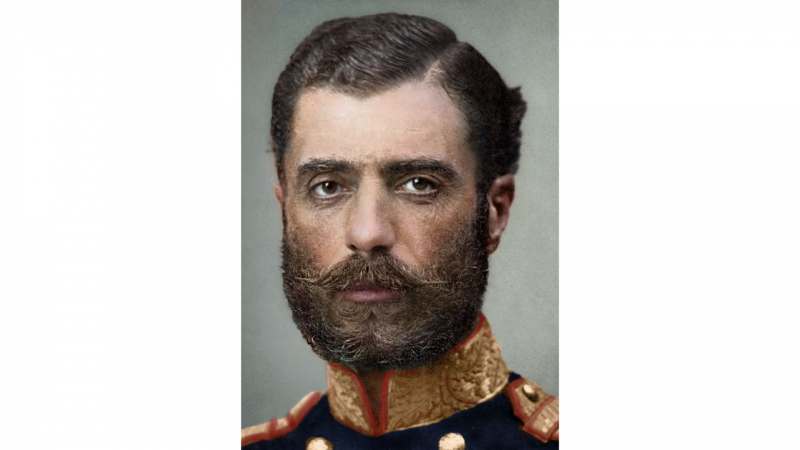
Photo: Colour by Klimbim 0.1 -
On the grounds of the crumbling Serbian Empire, Lazar Hrebeljanović (1329–15 June 1389), a medieval Serbian king, established the greatest and most powerful empire. The Great Morava, West Morava, and South Morava river basins made up Lazar's state, which historians describe as Moravian Serbia. Lazar ruled Moravian Serbia between 1373 and 1389, when he passed away. He claimed to be the direct descendant of the Nemanjic dynasty, which ruled over Serbia for two centuries before dissolving in 1371, and he sought to revive the Serbian Empire and install himself at its helm. The Serbian Orthodox Church fully endorsed Lazar's plan, but the nobles did not regard him as their supreme leader. Although he only held the rank of prince, he is frequently referred to as Tsar Lazar Hrebeljanović.
Assembled to fight the Ottoman Empire's invasion, led by Sultan Murad I, Lazar was murdered at the Battle of Kosovo in June 1389. Both sides suffered significant losses as the conflict came to a close without a clear winner. In the summer of 1390, Lazar's widow, Milica, who served as the guardian for their young son Stefan Lazarevi, Lazar's successor, acceded to Ottoman rule. Lazar is valued highly in Serbian history, culture, and tradition and is revered as a martyr and saint by the Orthodox Christian Church.
With Lazar's passing, Serbia lost its most powerful regional leader and perhaps its last line of defense against the encroaching Ottomans. This setback might have caused pessimism and a sense of hopelessness. The authors of the cultic texts saw Lazar's and the hundreds of his soldiers' deaths in the Kosovo Field as a martyrdom for Serbia and the Christian faith. Prince Lazar's martyrdom ensures that he will always be remembered by the Serbs as the good shepherd. His religion was associated with the other important Nemanji cults of medieval Serbia, Saint Simeon's and his son Saint Sava's. The cults helped the Serbs come together as a powerful religious and political group.
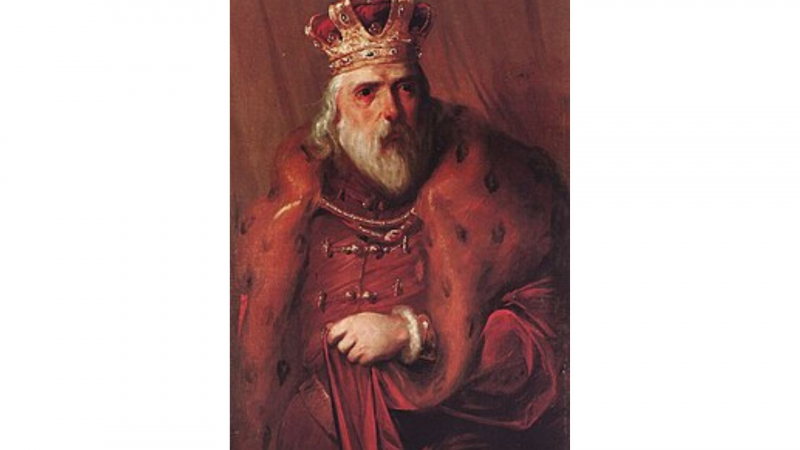
Photo: Wikipedia 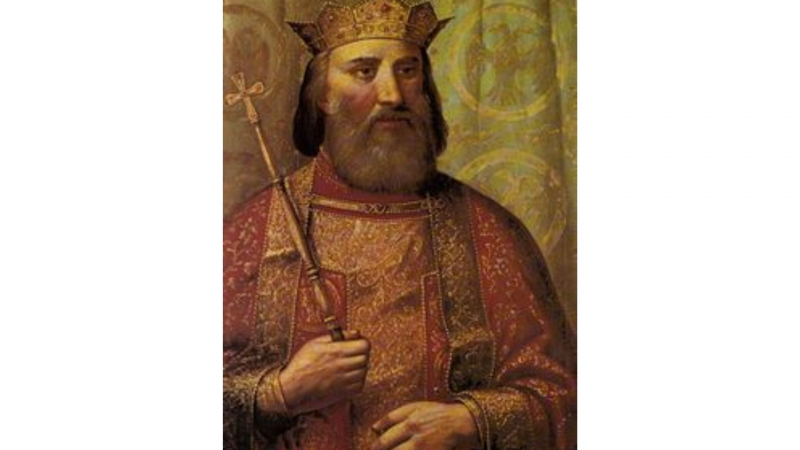
Photo: Wikipedia -
Hajduk Veljko, also known as Veljko Petrović (1780 – 1813), was the military commander in charge of the Negotin region for the Serbian Revolutionary troops in the First Serbian Uprising against the Ottoman Empire. He was regarded as one of the Uprising's greatest heroes and one of the most important historical figures in Serbia.
When Veljko learned about Karaore's activities, he immediately asked his wife for hajduk clothing and weapons and joined Glava's bands. Veljko was present in Glava's eta (band of fighters) when Karaore arrived at Oraac on the Meeting of the Lord, February 2, 1804, and was chosen by the people, including Glava, Kati, arapi, Jakovljevi, Vule, and others (a commander of a few men). He battled alongside Vujica Vulievi to liberate Belgrade in 1806 and was a skilled fighter. He was given authority by the Council in 1807 to incite uprising in the regions of Krivi Vir and Crna Reka after he was made a buljubaša / буљубаша. Despite being greatly outnumbered, he gallantly defended Soko Banja from the Turks in 1809. His tremendous bravery as an individual brought him recognition and fame throughout Serbia and the Balkans. He received the Russian Golden Cross in 1810 as a reward for his valor.
Songs about him were written even during his lifetime because he was a well-known hero. Over 70 lyrical poems and 10 epic poems have been written on him. "My almond tree came forth" (Расло ми је бадем дрво) and "Sickly there lieth Mustapha the Black" (Болан ми лежи Кара-Мустафа) are two of the most well-known ballads or epic poetry.
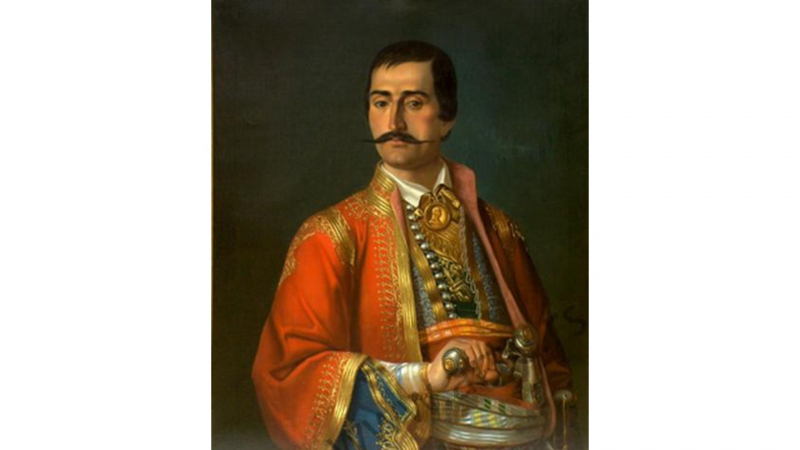
Photo: Wikipedia 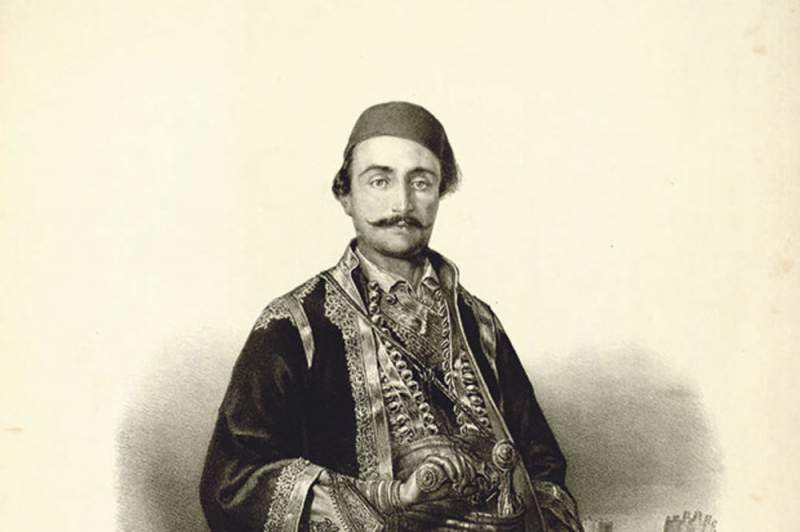
Photo: Kurir -
Legendary Serbian knight Miloš Obilić is said to have served Prince Lazar during the Ottoman invasion of Serbia in the latter half of the fourteenth century. Although the assassin is not identified in sources until the late 15th century, the fact that Murad's assassination is mentioned in Florentine, Serbian, Ottoman, and Greek sources suggests that versions of the story spread widely across the Balkans within fifty years of the event. He is not mentioned in contemporaneous sources, but figures prominently in later accounts of the 1389 Battle of Kosovo.
Obilić may or may not have existed, but Lazar's family "gave birth to the myth of Kosovo," which includes the story of Obilić, in order to strengthen their political control. He became a significant figure in Serbian epic poetry, where he is elevated to the level of the most noble national hero of medieval Serbian folklore. Milo's act, together with Prince Lazar's sacrifice and the supposed treachery of Vuk Brankovi, formed a crucial component of Serbian customs surrounding the Battle of Kosovo. Milo became regarded as a saint in the Serbian Church in the 19th century.
Milo wasn't regarded as a saint in the Serbian Church until the early 19th century. In Prince Lazar's narthex at the Hilandar Monastery on Mount Athos, a painting of Milo as a haloed, sword-carrying saint was painted during the Serbian Revolution (1804-1815). (Greece). Later that century, Petar II Petrovi-Njego, the prince-bishop of Montenegro, gave the heroic character of Milo a boost at the national level in the epic poem The Mountain Wreath (1847). The assassin is described in the poem as "the victim of a noble feeling, / An all mighty military genius, / A frightful thunder that breaks crowns," which praises his bravery in combat.
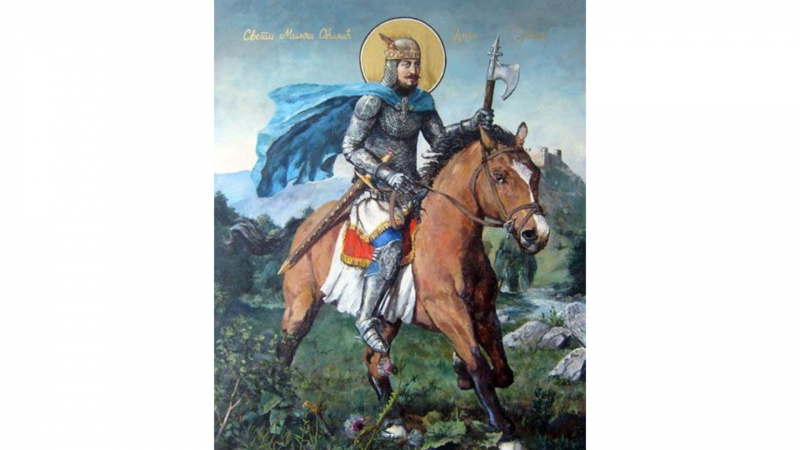
Photo: Pinterest 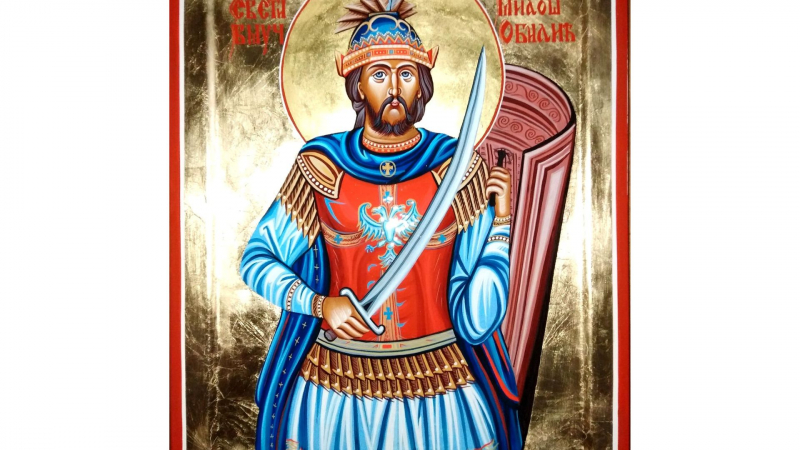
Photo: Serbian art














